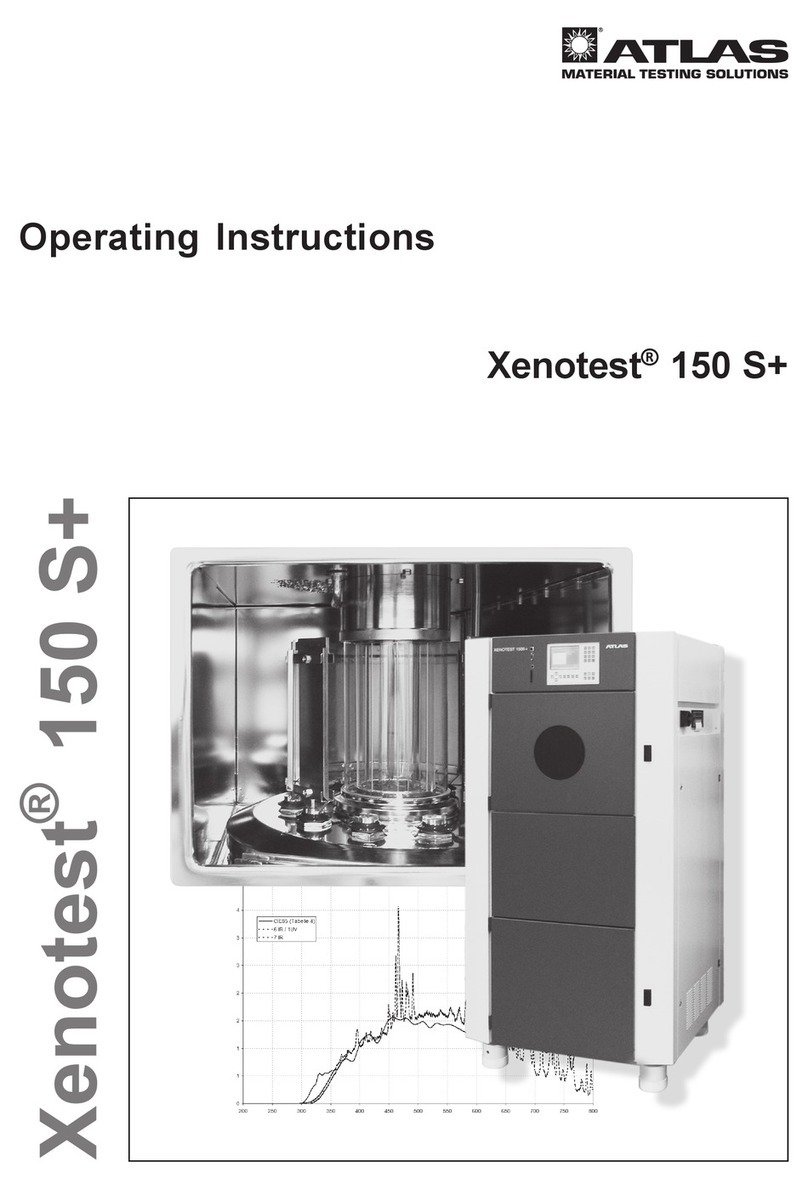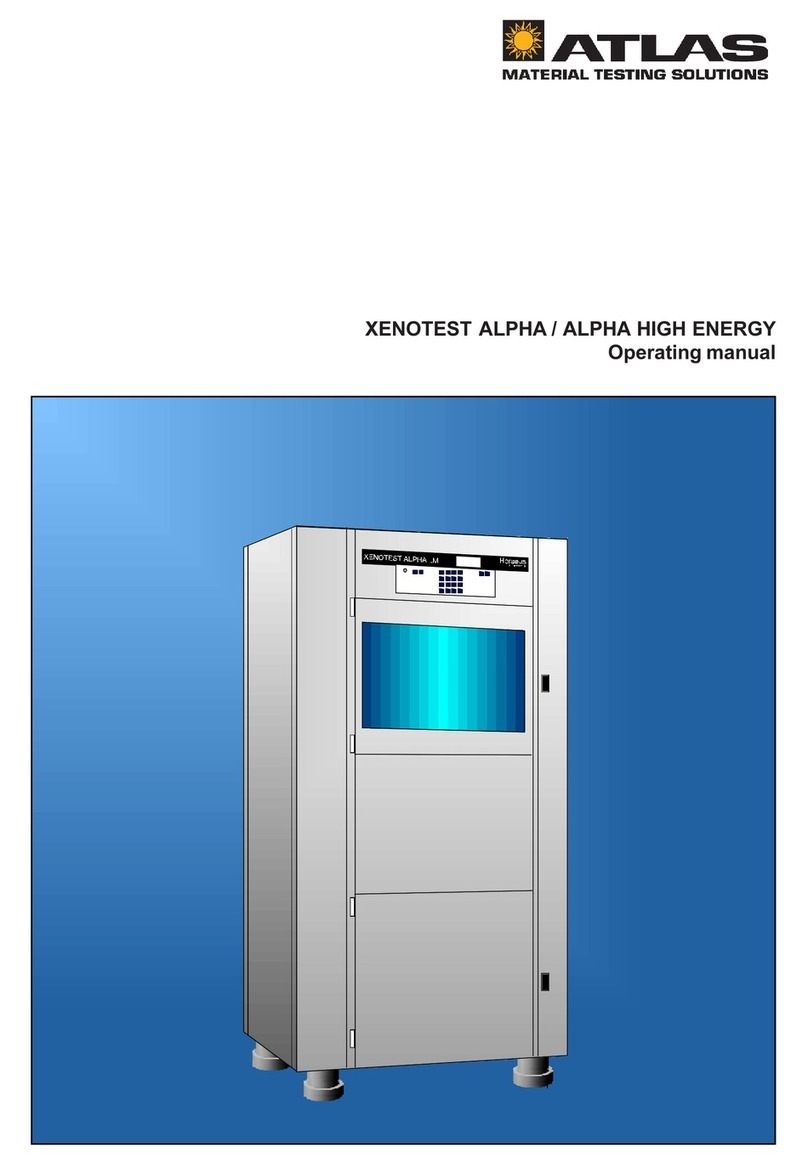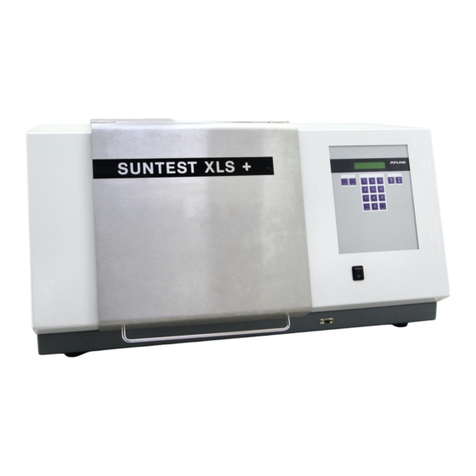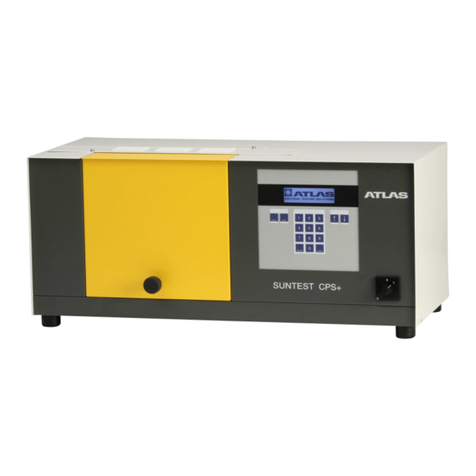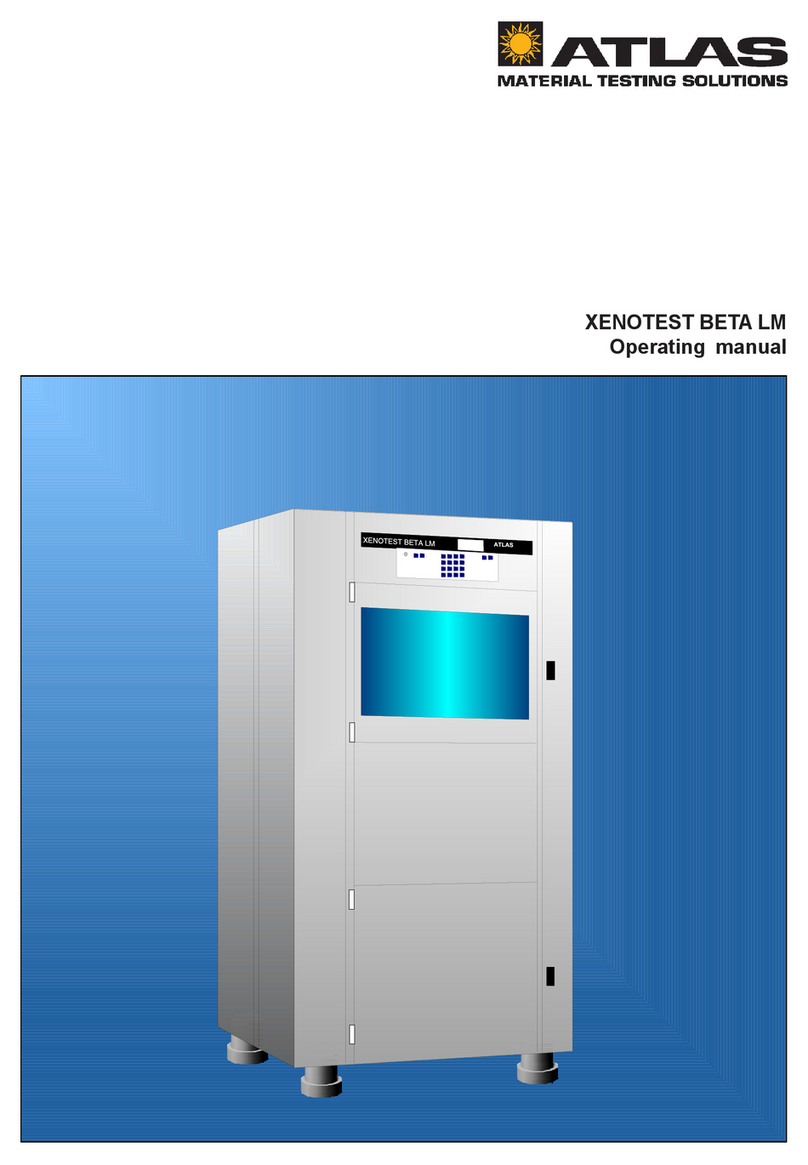- 2 -
Operating Manual SUNTEST®CPS+
Content
1 Notes for safe operation.................................................................................................................................4
1.1 Explanation of the symbols..........................................................................................................................6
1.2 General instructions for safe operation........................................................................................................7
2 Installation of the instrument.......................................................................................................................10
2.1 Scope of delivery........................................................................................................................................10
2.2 Packing ......................................................................................................................................................10
2.3 Installation requirements............................................................................................................................ 11
2.4 Installation.................................................................................................................................................. 11
3 Description of the instrument......................................................................................................................12
3.1 Front view...................................................................................................................................................12
3.3 Rear view...................................................................................................................................................12
3.3 Test chamber..............................................................................................................................................13
4 Description of functions...............................................................................................................................14
4.1 Radiation and lters ..................................................................................................................................14
4.2 Ventilation circuits ......................................................................................................................................14
4.3 Filter systems.............................................................................................................................................15
4.4 Spectral distribution ...................................................................................................................................16
4.5 Sensor system ..........................................................................................................................................17
4.6 Safety facilities...........................................................................................................................................18
4.7 Safety labels...............................................................................................................................................18
5 Installation .....................................................................................................................................................19
5.1 Mounting of black standard sensor............................................................................................................19
5.2 Assembling the radiation system ...............................................................................................................19
5.2.1 Components of the radiation system.....................................................................................................19
5.2.2 Opening of the assembly compartment ...............................................................................................20
5.2.3 Installation of the optical lters..............................................................................................................20
5.2.5 Installation of the mirrors.......................................................................................................................21
5.2.6 Closing the assembly compartment......................................................................................................22
5.3 Connection to the power supply.................................................................................................................22
6 Operation and shutdown..............................................................................................................................23
6.1 Conguration of the instrument ..................................................................................................................23
6.2 Standard testing procedure........................................................................................................................23
6.3 Testing procedure with optional unit...........................................................................................................23
6.4 Operation with program controller..............................................................................................................24
6.5 Shutdown...................................................................................................................................................25
6.6 Final shutdown...........................................................................................................................................25
7 Calibration......................................................................................................................................................26
7.1 Irradiance...................................................................................................................................................26
7.2 Black standard temperature.......................................................................................................................27
8 Cleaning / consumables...............................................................................................................................28
8.1 Cleaning ....................................................................................................................................................28
8.1.1 Outer surfaces and operating elements................................................................................................28
8.1.2 Reector................................................................................................................................................28
8.1.3 SUNSENSIV™-sensor..........................................................................................................................28
8.1.4 Radiation system...................................................................................................................................28
8.1.5 Air lter..................................................................................................................................................28
8.2 Consumables / spare parts........................................................................................................................29
9 Maintenance...................................................................................................................................................30
9.1 Maintenance ..............................................................................................................................................30
9.2 Spare parts.................................................................................................................................................30
10 Technical Data...............................................................................................................................................31
11 Accessories...................................................................................................................................................32
12 Declaration of conformity.............................................................................................................................34
13 Notes ..............................................................................................................................................................37
Page












